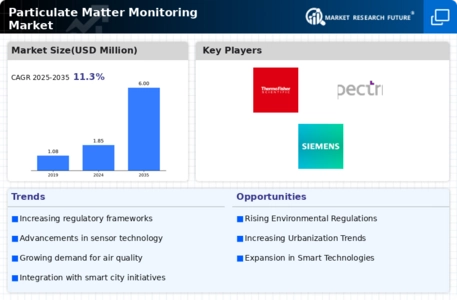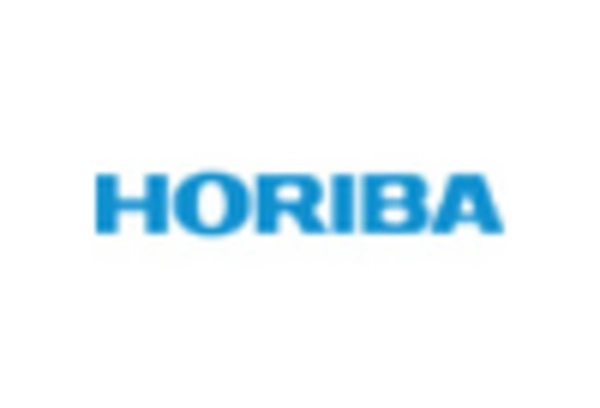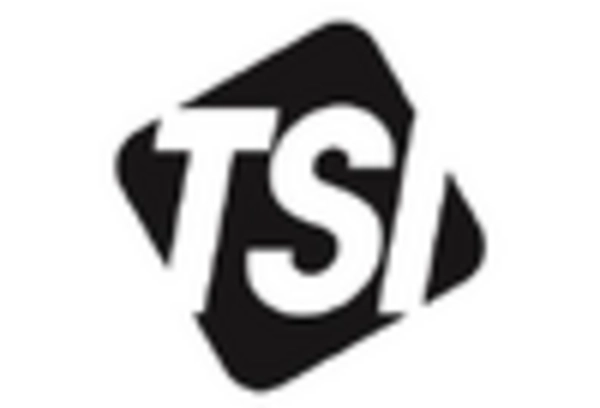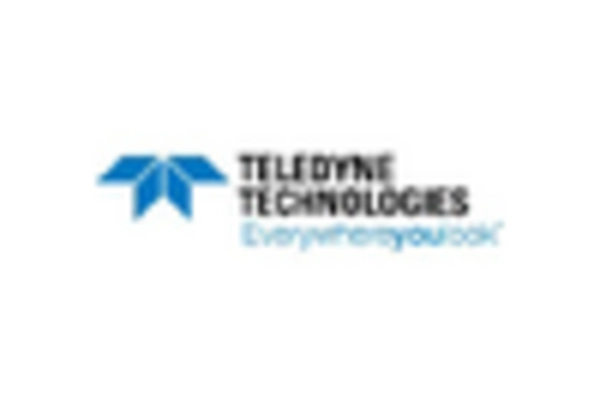Market Trends
Key Emerging Trends in the Particulate Matter Monitoring Market
The Particulate Matter Monitoring Market is witnessing several notable trends that are shaping the industry landscape. One prominent trend is the increasing integration of advanced sensor technologies. As the demand for accurate and real-time data on air quality grows, companies are leveraging cutting-edge sensor technologies to enhance the precision and reliability of particulate matter monitoring devices. These sensors, often incorporating advancements like laser-based technology or optical particle counters, enable more comprehensive and detailed monitoring, contributing to the overall efficiency of air quality management systems.
Another significant trend in the Particulate Matter Monitoring Market is the rise of smart and connected monitoring solutions. With the advent of the Internet of Things (IoT) and advancements in connectivity, monitoring devices are becoming increasingly intelligent and interconnected. These smart solutions offer real-time data transmission, remote monitoring capabilities, and data analytics functionalities. This trend not only improves the accessibility and usability of monitoring systems but also allows for more proactive decision-making and timely responses to changes in air quality.
The demand for portable and wearable particulate matter monitoring devices is also on the rise, reflecting a consumer-driven trend towards personal health and environmental awareness. Individuals and communities are increasingly interested in monitoring the air they breathe, driving the development of compact and user-friendly monitoring devices. Wearable technologies, such as personal air quality monitors, provide individuals with the ability to track their exposure to particulate matter, fostering a sense of empowerment and contributing to the broader trend of decentralized environmental monitoring.
Furthermore, there is a growing emphasis on data analytics and artificial intelligence (AI) in the Particulate Matter Monitoring Market. As the volume of data generated by monitoring devices increases, companies are leveraging advanced analytics and AI algorithms to derive meaningful insights. These technologies enable predictive modeling, trend analysis, and identification of potential sources of particulate matter. Integrating AI into monitoring systems not only enhances the accuracy of data interpretation but also facilitates the development of more effective pollution mitigation strategies.
Regulatory developments and global initiatives are influencing market trends in the Particulate Matter Monitoring Market. Governments and environmental agencies are increasingly implementing stringent regulations to address air quality concerns. This trend not only drives the adoption of monitoring solutions to ensure compliance but also creates a market for specialized devices that can meet evolving regulatory standards. Additionally, international collaborations and agreements, such as the Paris Agreement, contribute to a global push towards standardizing air quality monitoring practices, influencing market trends on a broader scale.
Collaborations and partnerships between industry players and research institutions are emerging as a notable trend in the Particulate Matter Monitoring Market. Companies are recognizing the value of collaborative efforts to advance research, develop innovative solutions, and address complex challenges associated with air quality monitoring. These partnerships foster knowledge exchange, encourage cross-disciplinary approaches, and accelerate the development of cutting-edge technologies, ultimately benefiting the entire industry.
Lastly, the increasing focus on sustainable and eco-friendly monitoring solutions is a prevalent trend in the Particulate Matter Monitoring Market. Companies are incorporating environmentally friendly materials, energy-efficient technologies, and sustainable manufacturing practices into the production of monitoring devices. This trend aligns with broader global efforts towards sustainability and corporate social responsibility, resonating with environmentally conscious consumers and creating a positive impact on the market's long-term trajectory.
















Leave a Comment